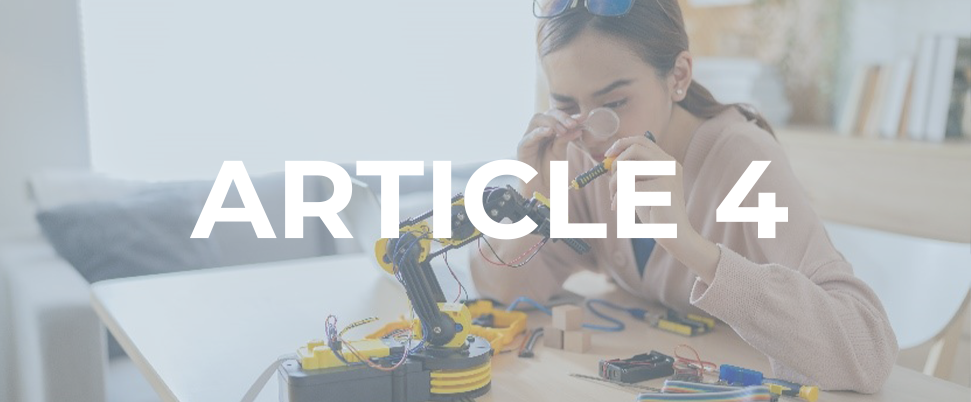Enhancing Arduino education in European schools: a route to innovation and skill development
With the increasing need for digital competencies in the workforce, educational institutions around Europe are using novel methodologies to teach coding, electronics, and engineering. Arduino is one of the most influential instruments in this movement. Arduino, with its simplicity, variety, and practical applications, is facilitating the development of important technical skills among students around Europe via experiential learning. Schools from Spain to Finland are using Arduino to cultivate creativity, problem-solving skills, and critical thinking, therefore equipping pupils for a technology-oriented future.

Practical initiatives in European educational settings
European educators are discovering that project-based learning with Arduino makes abstract topics concrete and approachable. For instance:
– Italian schools have included Arduino into environmental science curricula. Students construct air quality monitoring devices with Arduino sensors to quantify contaminants and temperature. This instruction imparts programming and electronics skills while emphasizing the significance of environmental consciousness and data-informed decision-making (Circuit Digest, n.d.; Arduino Project Hub, n.d.).
– In France, students enrolled in technology courses use Arduino to create automated watering systems for urban gardens. Students acquire knowledge in sustainable agriculture, coding, and automation by programming sensors to assess soil moisture and regulate water distribution, therefore addressing real-world challenges (Circuit Digest, n.d.; SSRN, n.d.).
– Germany has seen an increase in the use of Arduino for renewable energy initiatives. In some high schools, students construct solar-powered gadgets, including solar trackers and tiny wind turbines, controlled by Arduino microcontrollers. This facilitates their comprehension of renewable energy ideas while acquiring practical expertise in technology and engineering fundamentals (Arduino Docs, n.d.).
Such projects connect theory with experience, providing students with a profound comprehension of the application of coding and electronics to real-world situations.

Empowering girls in STEM through Arduino
Numerous European nations are using Arduino initiatives to bridge the gender disparity in STEM (Science, Technology, Engineering, and Mathematics). Initiatives like “Girls in Tech” in countries such as Sweden and Denmark use Arduino to encourage female students to engage with coding and electronics.
Swedish schools have implemented workshops in which females design interactive art pieces and wearable technologies using Arduino. By integrating technology with creativity, these initiatives dismantle prejudices and demonstrate that coding transcends conventional technical domains (Hackster.io, n.d.).
These initiatives have effectively enhanced participation and confidence among females, illustrating that experiential, innovative learning may make STEM disciplines more accessible and attractive to everyone.
Arduino in robotics contests and hackathons
Throughout Europe, robotics contests and hackathons are emerging as essential instruments to motivate students to develop with Arduino. Events like European Robotics Week and CodeWeek EU Hackathons provide challenges that need students to construct and program robots using Arduino kits.
For example:
In Spain, students engage in regional robotics competitions where they build robots to traverse mazes or execute designated tasks such as item recovery. These contests emphasize collaboration, analytical reasoning, and adaptability in high-pressure situations (Hackster.io, n.d.).
In Poland, hackathons centered on smart city innovations motivate students to create Arduino-based projects, including traffic management systems and garbage disposal solutions. These challenges instruct students on how technology may enhance everyday living inside their communities (Circuit Schools, n.d.).
Participating in these activities enables students to apply their talents to practical challenges while developing resilience, creativity, and collaborative abilities.

Incorporating Arduino across disciplines
Arduino’s adaptability is one of its assets, making it an ideal instrument for interdisciplinary learning. European educational institutions are using Arduino not just in coding and engineering courses but also in disciplines such as:
Biology: In the Netherlands, students use Arduino to construct plant development monitors that assess light, temperature, and moisture levels to comprehend the determinants of plant health (Arduino Project Hub, n.d.).
Physics: In the United Kingdom, physics courses use Arduino to investigate principles like as motion, acceleration, and energy transfer. Students construct miniature automobiles or pendulum systems to illustrate data gathered via sensors (SSRN, n.d.).
Art: In Finland, Arduino facilitates the creation of interactive sculptures and installations that respond to sound, light, or motion. This fusion of art and technology promotes creative thinking in pupils as they acquire technical abilities (Hackster.io, n.d.).
Equipping students for the future
The World Economic Forum forecasts the emergence of millions of new technology-driven occupations in the next years, indicating that pupils need proficiency in coding, electronics, and critical thinking. European schools are equipping pupils with the necessary capabilities to excel in the digital economy by incorporating Arduino into their classes.
Arduino’s capacity to animate code via tangible, real-world applications makes the learning experience both significant and pleasurable. As an increasing number of institutions implement this strategy, they are not only equipping students for future employment but also cultivating a generation of creative problem-solvers and inventive thinkers who will influence Europe’s technology landscape.
Summing up
European schools are significantly investing in their students’ potential by extending the use of Arduino in education, therefore bridging the gap between academic learning and the skills required in the contemporary workforce.
References
Circuit Digest. (n.d.). DIY Arduino based air quality monitoring system. Retrieved from https://circuitdigest.com/microcontroller-projects/arduino-based-air-quality-monitoring-system
Circuit Digest. (n.d.). Automatic irrigation system using an Arduino Uno. Retrieved from https://circuitdigest.com/microcontroller-projects/automatic-irrigation-system-using-arduino-uno
Arduino Project Hub. (n.d.). Adjustable air quality monitoring & analysis platform with plug-unplug system. Retrieved from https://projecthub.arduino.cc/abcda123/adjustable-air-quality-monitoring-analysis-platform-with-plug-unplug-system-8a0057
Arduino Project Hub. (n.d.). Automated greenhouse with Arduino. Retrieved from https://projecthub.arduino.cc/aleixj/974338b9-bb36-4d33-9fbf-95184e188ea4
Arduino Tutorial. (n.d.). Automatic irrigation system using Arduino. Retrieved from https://arduinogetstarted.com/tutorials/arduino-automatic-irrigation-system
Arduino Docs. (n.d.). Smart farm irrigation system using Arduino® Edge Control. Retrieved from https://docs.arduino.cc
European School Education Platform. (2024). Empowering Educators: Integrating Robotics, Arduino, and Coding into the Classroom. Retrieved from https://school-education.ec.europa.eu/en/learn/courses/empowering-educators-integrating-robotics-arduino-and-coding-classroom
European School Education Platform. (2024). Educative Robotics and Coding with Arduino. Retrieved from https://school-education.ec.europa.eu/en/learn/courses/educative-robotics-and-coding-arduino
Alò, R. S., et al. (2020). Using Arduino in Science, Technology, Engineering, and Mathematics (STEM) Education. Retrieved from https://files.eric.ed.gov/fulltext/EJ1428877.pdf European Commission. (2022). The Gender Gap in STEM: EU Support to Strengthen Gender Equality in STEM. Retrieved from https://apre.it/wp-content/uploads/2023/02/eu-support-to-strengthen-gender-equality-in-stem-KI0422202ENN.pdf


